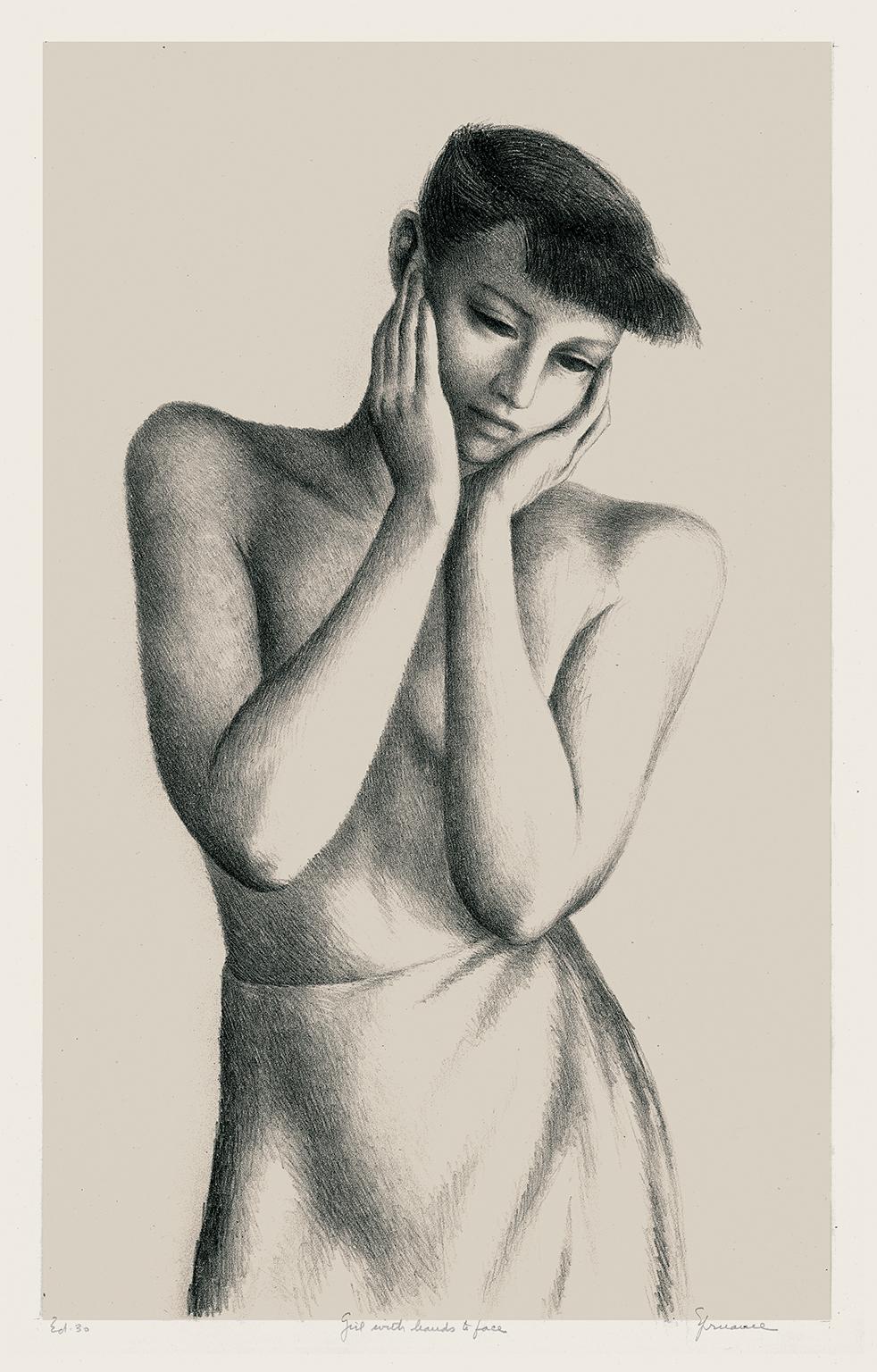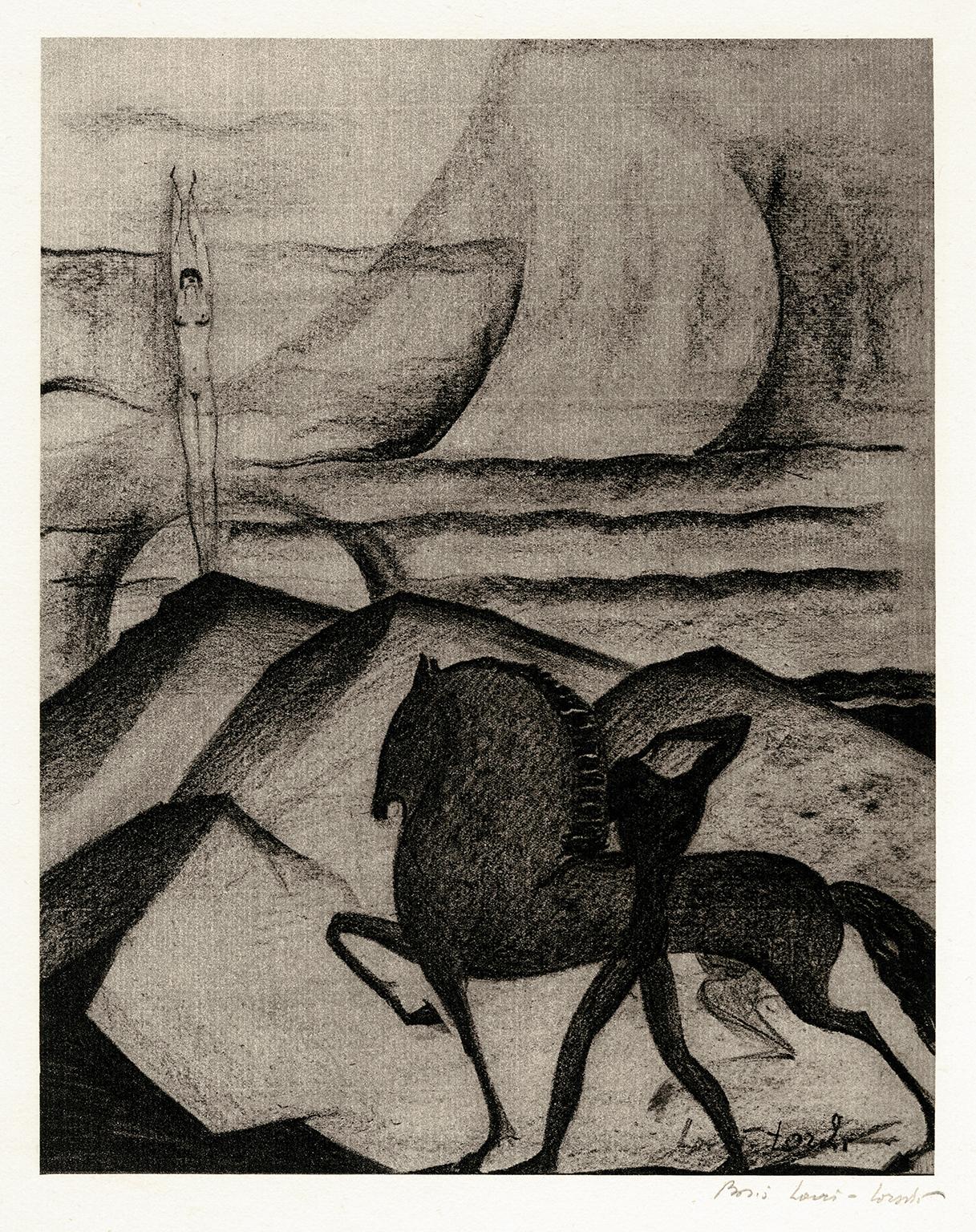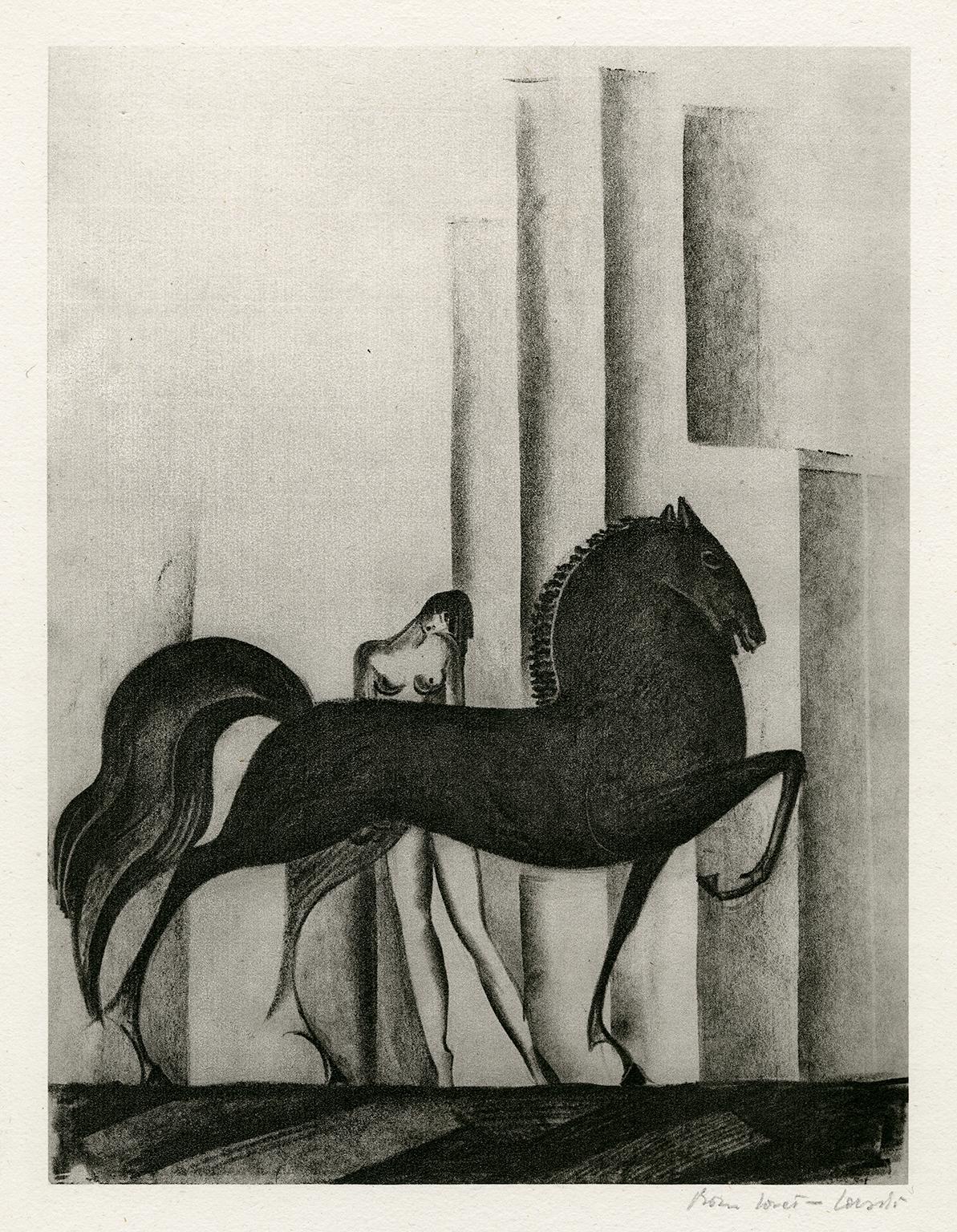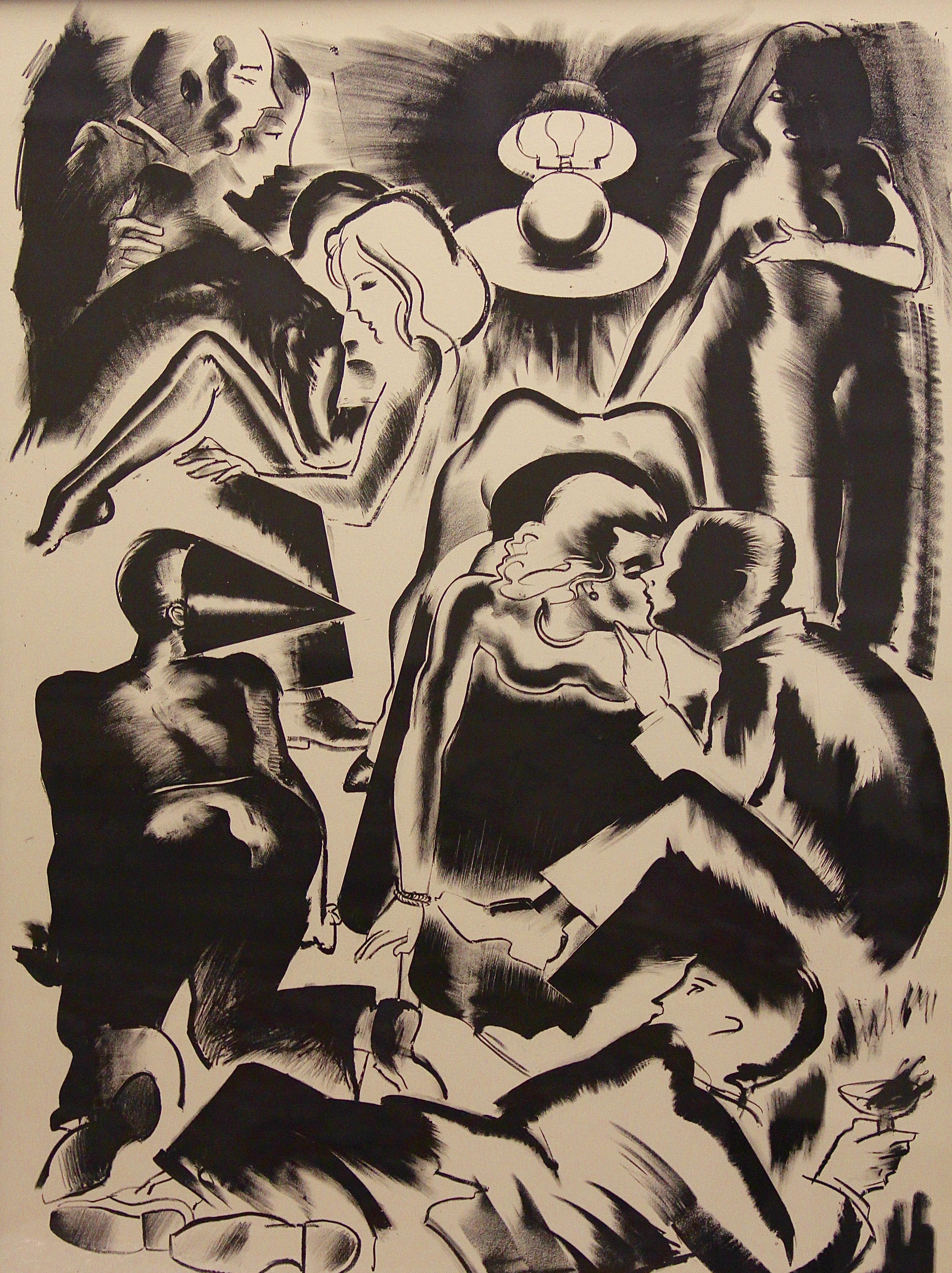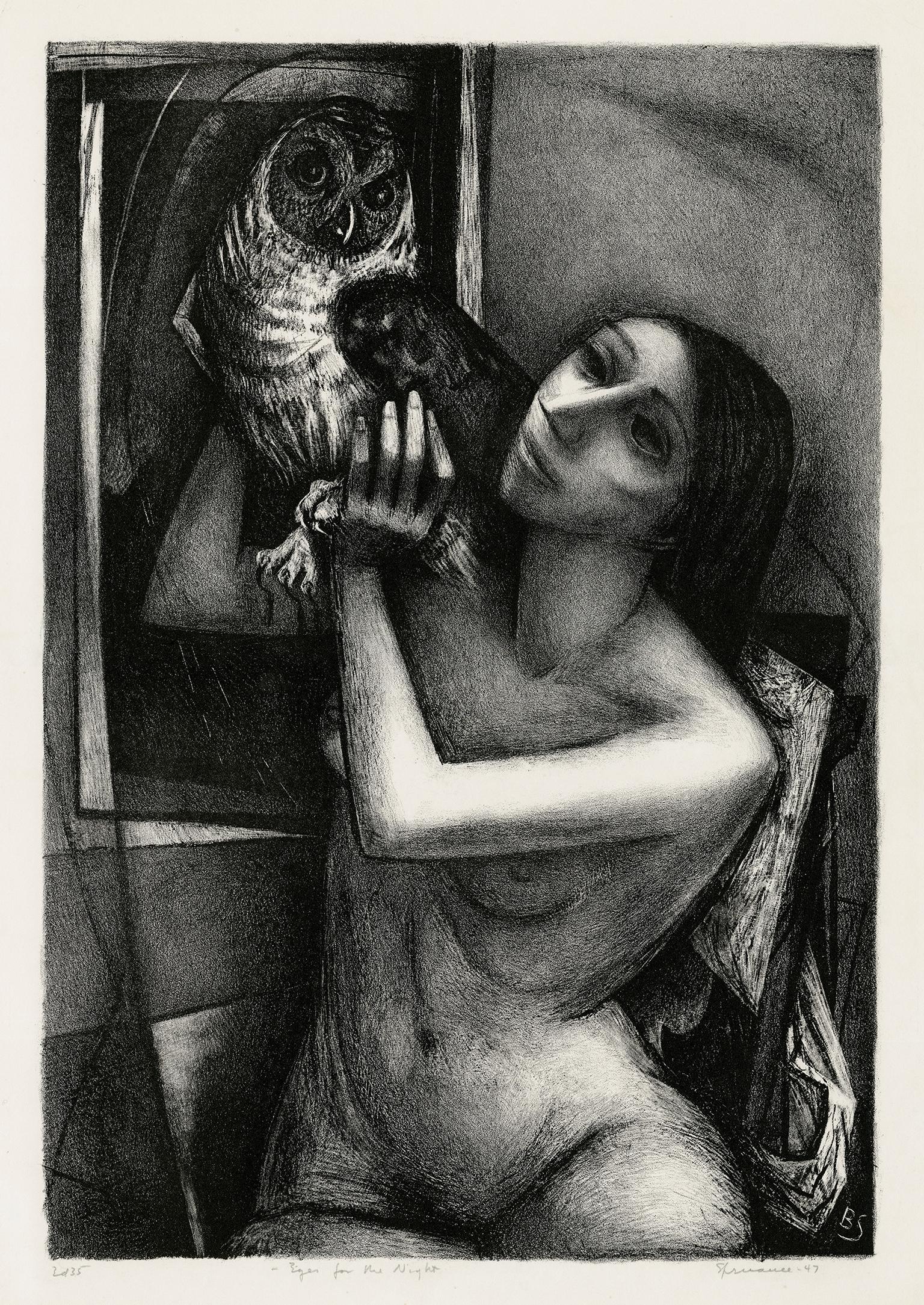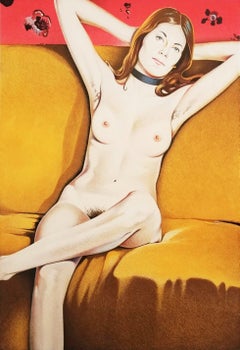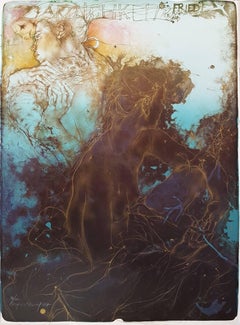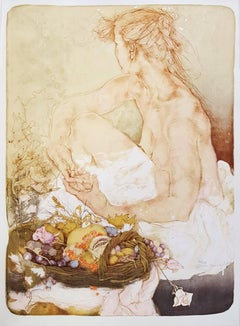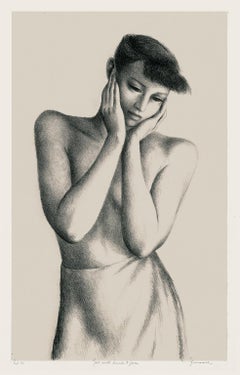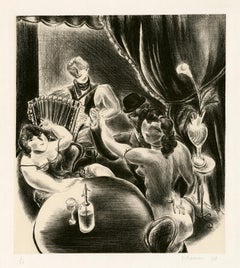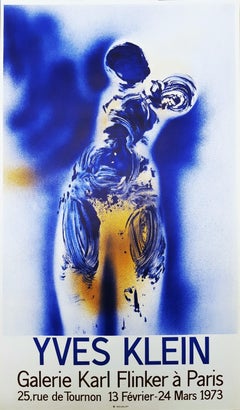
Galerie Karl Flinker (Anthropometry) Poster /// Yves Klein Nude Figurative Blue
View Similar Items
Want more images or videos?
Request additional images or videos from the seller
1 of 21
Galerie Karl Flinker (Anthropometry) Poster /// Yves Klein Nude Figurative Blue1973
1973
Price:$1,685.78
About the Item
- Creation Year:1973
- Dimensions:Height: 36.5 in (92.71 cm)Width: 21.5 in (54.61 cm)
- Medium:
- Movement & Style:
- After:Yves Klein (1928 - 1962, French)
- Period:
- Condition:
- Gallery Location:Saint Augustine, FL
- Reference Number:1stDibs: LU12126530542
About the Seller
5.0
Platinum Seller
Premium sellers with a 4.7+ rating and 24-hour response times
Established in 1978
1stDibs seller since 2015
1,323 sales on 1stDibs
Authenticity Guarantee
In the unlikely event there’s an issue with an item’s authenticity, contact us within 1 year for a full refund. DetailsMoney-Back Guarantee
If your item is not as described, is damaged in transit, or does not arrive, contact us within 7 days for a full refund. Details24-Hour Cancellation
You have a 24-hour grace period in which to reconsider your purchase, with no questions asked.Vetted Professional Sellers
Our world-class sellers must adhere to strict standards for service and quality, maintaining the integrity of our listings.Price-Match Guarantee
If you find that a seller listed the same item for a lower price elsewhere, we’ll match it.Trusted Global Delivery
Our best-in-class carrier network provides specialized shipping options worldwide, including custom delivery.More From This Seller
View AllSitzende Frau mit Blüten (Seated Woman with Flowers) /// Karl Schmidt-Rottluff
By Karl Schmidt-Rottluff
Located in Saint Augustine, FL
Artist: (after) Karl Schmidt-Rottluff (German, 1884-1976)
Title: "Sitzende Frau mit Blüten (Seated Woman with Flowers)"
Series: Die Aktion
Year: 1914
Medium: The Complete Vol. 4, No. 11 issue of 'Die Aktion' with a Lithograph on cream smooth wove paper
Limited edition: Unknown
Printer: F.E. Haag, Melle, Hanover, Germany
Publisher: Verlag der Wochenschrift DIE AKTION, Berlin, Germany
Sheet size: 12.25" x 9.25"
Image size: 3.82" x 3.25"
Condition: Toning to sheets (as normal). Light water staining at center right edge and upper right corner. Some separation and small paper losses at spine. It is otherwise in very good condition
Extremely rare
A very nice copy of this extremely scarce issue
Notes:
Provenance: private collection - Fürstenberg/Havel, Germany. The lithograph on the cover is a smaller-sized reproduction after Schmidt-Rottluff's 1913 larger original signed woodcut engraving edition, ("Das Graphische Werk Bis 1923" - Schapire No. 114, page 28). Published March 14th, 1914. A total of 14 pages. There is an example of this complete issue in the permanent collection of the Museum of Modern Art, New York, NY.
In 1911 Franz Pfemfert, a cantankerous critic of capitalism and Wilhelmine society, founded Die Aktion as a political and literary journal. In April of the following year, a new subtitle declared the journal a "weekly for politics, literature, and art." Although politics remained the priority, Die Aktion began featuring visual art coverage as well as original prints and illustrations.
Artist Max Oppenheimer (MOPP) worked closely with 'Die Aktion' in its early years, portraying in its pages many of the young writers who gave the journal its distinctive voice. Egon Schiele made his first woodcuts at Pfemfert's urging in 1916, for publication in the journal. Other frequent contributors included Ludwig Meidner and, later, Conrad Felixmüller and Karl Schmidt-Rottluff.
Adamantly opposed to World War I, Pfemfert skirted tightened censorship from August 1914 to October 1918 by treating contemporary events only through artistic and literary allusions. At a time when reading books by foreign authors was considered unpatriotic, he dedicated entire issues of Die Aktion to Russian, French, and Belgian authors and artists. In late 1918, however, Pfemfert resumed vocal political critique, siding with the radical left. His selection of prints, formerly varied, became overtly political. After 1921, he ceased art coverage altogether, decreased the number of issues, and used the publication exclusively as a mouthpiece for his own increasingly partisan views.
Biography:
Karl Schmidt-Rottluff (born December 1, 1884, Rottluff, near Chemnitz, Germany—died August 9, 1976, West Berlin [now Berlin]), German painter and printmaker who was noted for his Expressionist landscapes and nudes.
In 1905 Schmidt-Rottluff began to study architecture in Dresden, Germany, where he and his friend Erich Heckel met Ernst Ludwig Kirchner and Fritz Bleyl...
Category
1910s Expressionist Nude Prints
Materials
Lithograph
Marquet's Mannequin /// Mel Ramos Figurative Nude Woman Lady Pop Art Lithograph
By Mel Ramos
Located in Saint Augustine, FL
Artist: Mel Ramos (American, 1935-2018)
Title: "Marquet's Mannequin"
*Unsigned proof
Year: 1979
Medium: Original Lithograph on unbranded white wove paper
Limited edition: an unsigned...
Category
1970s Pop Art Nude Prints
Materials
Lithograph
Tenderness Gives Rise to Harmony /// Contemporary Nude Female Artist Woman Art
By Dagmar Mezricky
Located in Saint Augustine, FL
Artist: Dagmar Mezricky (Czech, 1944-)
Title: "Tenderness Gives Rise to Harmony"
*Signed, numbered, and dated by Mezricky in pencil lower left
Year: 1988
Medium: Original Lithograph...
Category
1980s Contemporary Nude Prints
Materials
Lithograph
Earth /// Contemporary Female Artist Nude Woman Figurative Lithograph Modern Art
By Dagmar Mezricky
Located in Saint Augustine, FL
Artist: Dagmar Mezricky (Czech, 1944-)
Title: "Earth"
*Signed, numbered, and dated by Mezricky in pencil lower right
Year: 1989
Medium: Original Lithograph on Rives BFK paper
Limite...
Category
1980s Contemporary Nude Prints
Materials
Lithograph
Le Nu à la Guitarre (The Nude on the Guitar) (Serenade) /// Salvador Dali Modern
By Salvador Dalí
Located in Saint Augustine, FL
Artist: Salvador Dali (Spanish, 1904-1989)
Title: "Le Nu à la Guitarre (The Nude on the Guitar) (Serenade)"
Portfolio: Nudes
*Signed by Dali in pencil lower right
Year: 1970
Medium: Original Lithograph on white Rives paper
Limited edition: 104/120
Printer: Desjobert, Paris, France
Publisher: E.G.I., Beverly Hills, CA
Reference: "The Official Catalog of the Graphic Works of Salvador Dali" - Field No. 70-8-D, page 158
Beautifully framed in handmade real gold-leaf moulding with raw silk matting and gold filet
Framed size: 30.25" x 38.25"
Image size: 20" x 28.25"
Condition: Light toning to sheet in margins and some minor handling creases. Some minor cosmetic wear to framing. It is otherwise a strong impression in very good condition
Rare
Notes:
Provenance: private collection - Philadelphia, PA. Numbered by Dali in pencil lower left. Comes from Dali's 1970 "Nudes" portfolio of 8 lithographs from original drawings. Printed in light yellow-brown on pale green panel.
Note: We are specialists in Salvador Dali's printmaking oeuvre, having personally worked with his cataloger Albert Field in the 1980's, we unconditionally guarantee all of our examples to be authentic.
Biography:
Salvador Dalí (May 11, 1904 – January 23, 1989), was a prominent Spanish Catalan surrealist painter born in Figueres, Spain. Dalí was a skilled draftsman, best known for the striking and bizarre images in his surrealist work. His painterly skills are often attributed to the influence of Renaissance masters. His best-known work, The Persistence of Memory, was completed in August 1931. Dalí's expansive artistic repertoire included film, sculpture, and photography, in collaboration with a range of artists in a variety of media.
Dalí attributed his "love of everything that is gilded and excessive, my passion for luxury and my love of oriental clothes...
Category
1970s Surrealist Nude Prints
Materials
Gold Leaf
Peace /// Mel Ramos Figurative Woman Nude Pop Art Typography Lithograph Print
By Mel Ramos
Located in Saint Augustine, FL
Artist: Mel Ramos (American, 1935-2018)
Title: "Peace"
*Unsigned edition
Year: 1970
Medium: Original Offset-Lithograph on light smooth wove paper
Limited edition: 50, (there was also...
Category
1970s Pop Art Nude Prints
Materials
Lithograph, Offset
You May Also Like
Balinese Mother and Child
By Beniamino Bufano
Located in San Francisco, CA
This artwork titled " Balinese Mother and Child" 1970 is an original color lithograph on Japan nacre paper by noted Italian/American artist Beniamino Benevenuto Bufano, 1890-1970. It is hand signed, inscribed Bon a Tirer and dated 1970 in pencil by the artist. The image size 14 x 9,75 is inches, framed size is 27.35 x 21.75 inches. Published by First Impressions, San Francisco, printed by Fikrat Al-Khouri at First Impressions Graphic Society. it is beautifully custom framed in a wooden gold frame, with gold color spacer. It is in excellent condition.
About the artist:
Beniamino Benvenuto Bufano was born in San-Fele, Italy on Oct. 14, 1889. At age three Bufano's family brought him to NYC where he spent his childhood and was educated by private tutors. He studied at the ASL in NYC from 1913-15, the pupil of James L. Fraser, Herbert Adams, and Paul Manship. He came to San Francisco in 1915 to work on a sculpture for the PPIE. For awhile he worked in the studio of coppersmith Dirk van Erp. He then traveled extensively for four years in France, Italy, India, and China. After returning to San Francisco in 1921, he remained there the rest of his life except for visits to the Orient and Europe. Always a radical, he lost his teaching position at San Francisco Institute of Art in 1923 because he was too modern for the conservative faculty. He later taught at UC Berkeley and the CCAC (1964-65). Henry Miller wrote of him, "He will outlive our civilization and probably be better known, better understood, both as a man and artist, five thousand years hence." His work, simple in style and monumental in scale, includes smoothly rounded animals in granite and icons sheathed in stainless steel. Only five feet tall, Bufano was a controversial, free spirit until his death in San Francisco on Aug. 16, 1970. Member: SFAA; NSS; American Artists Congress. Exh: Whitney Museum (NYC), 1917; Arden Gallery...
Category
Late 20th Century American Modern Nude Prints
Materials
Lithograph
'Girl with Hands to Face' — Mid-century Modernism
By Benton Murdoch Spruance
Located in Myrtle Beach, SC
Benton Spruance, 'Girl with Hands to Face', two-color lithograph, 1940, edition 30, Fine and Looney 180. Signed, titled, and annotated 'Ed. 30' in pencil. A superb impression, on cr...
Category
1940s American Modern Figurative Prints
Materials
Lithograph
$960 Sale Price
20% Off
Rendez-Vous — Early 20th-Century Modernism
By Boris Lovet-Lorski
Located in Myrtle Beach, SC
Boris Lovet-Lorski, Untitled (Rendez-Vous), lithograph, edition 250, 1929. Signed in pencil. Signed in the stone, lower right. From a suite of 10 lithographs published by the artist ...
Category
1920s American Modern Nude Prints
Materials
Lithograph
'Dancing' — 'les années folles' Paris Masterwork, 1928
By Yasuo Kuniyoshi
Located in Myrtle Beach, SC
Yasuo Kuniyoshi, 'Dancing', lithograph, 1928, edition 30, Davis L-29. Signed, dated, and numbered '8/30' in pencil. A superb, richly-inked impression, printed on cream chine appliqué on heavy off-white wove backing; the full sheet with wide margins (1 3/8 to 4 7/8 inches), in excellent condition. Printed by Desjobert, Paris. Scarce. Matted to museum standards, unframed.
Impressions of this work are in the collections of the Museum of Modern Art, Whitney Museum of Modern Art, and Yasuo Kuniyoshi Museum (Japan).
ABOUT THIS WORK
The French economy boomed from 1921 until the Great Depression reached Paris in 1931. This period called 'Les années folles' or the 'Crazy Years', saw Paris reestablished as a capital of art, music, literature, and cinema. Paris in the 1920s and 1930s was the home and meeting place of some of the world's most prominent painters, sculptors, composers, dancers, poets, and writers. For those in the arts, it was, as Ernest Hemingway described it, "A moveable feast". Paris was home to an exceptional number of galleries, art dealers, and a network of wealthy patrons who offered commissions and held salons.
Pablo Picasso, perhaps the most famous artist in Paris, shared renown with a remarkable group of others, including the Romanian sculptor Constantin Brâncuși, the Belgian René Magritte, the Italian Amedeo Modigliani, the Russian émigré Marc Chagall, the Catalan and Spanish artists Salvador Dalí, Joan Miró, Juan Gris, and the German surrealist...
Category
1920s American Modern Nude Prints
Materials
Lithograph
Untitled (Nude with Horse)
By Boris Lovet-Lorski
Located in Myrtle Beach, SC
Boris Lovet-Lorski, Untitled (Nude with Horse), lithograph, edition 250, 1929. Signed and numbered 10 in pencil. Number 10 of Volume 1, a series of 10 ...
Category
1920s American Modern Nude Prints
Materials
Lithograph
Treasure : Harlequine - Original handsigned lithograph - 199ex
By Jean-Baptiste Valadie
Located in Paris, IDF
Jean-Baptiste VALADIE
Treasure : Harlequine
Original lithograph
Handsigned in pencil
Limited /199 copies
On vellum 71 x 55 cm (c. 28 x 22 in)
Excellent condition
Category
Late 20th Century Modern Nude Prints
Materials
Lithograph
